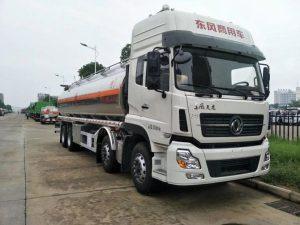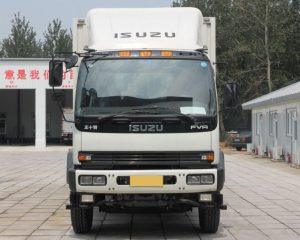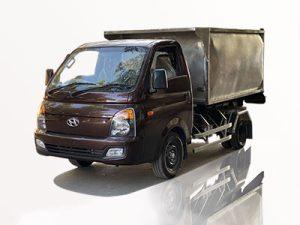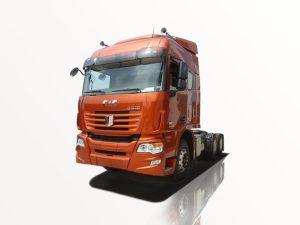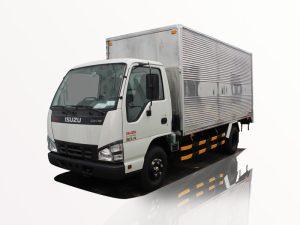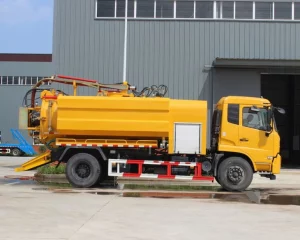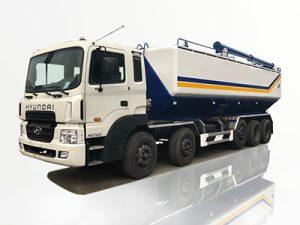Monday to Saturday - 8:00 -17:30
How Does a Trash Truck Work? An In-Depth Exploration
Trash trucks are a vital part of urban infrastructure, responsible for the collection and transportation of waste from residential and commercial areas. Understanding how these trucks operate can provide insights into waste management and environmental sustainability. In this comprehensive guide, we will delve into the mechanics, technology, and processes that make trash trucks essential for our cities.
1. The Anatomy of a Trash Truck
1.1 Basic Components
A standard trash truck consists of several critical components, each playing a role in the collection and transportation of waste. Here are the primary parts:
- Cab: The front section where the driver controls the vehicle.
- Chassis: The frame that supports the entire truck.
- Compactor: A mechanism that compresses waste to maximize space in the truck.
- Body: The container where the waste is stored.
- Lifting Mechanism: A hydraulic system used for lifting and dumping waste containers.
1.2 Types of Trash Trucks
There are several types of trash trucks, each designed for specific waste collection needs:
| Type | Description | Best Use |
|---|---|---|
| Rear Loader | Features a rear access point for waste collection. | Residential areas and small commercial spaces. |
| Front Loader | Designed for larger containers, using a front-mounted fork. | Commercial and industrial waste collection. |
| Side Loader | Uses a side mechanism to collect waste bins. | Urban areas with narrow streets or high-density population. |
| Compactor Truck | Equipped with a compaction mechanism to reduce the volume of waste. | Commercial waste with high volume and lower frequency of pickups. |
2. How Trash Trucks Collect Waste
2.1 The Collection Process
The waste collection process involves a series of steps that ensure efficient and effective retrieval of trash:
- The trash truck follows a designated route, stopping at pre-scheduled locations.
- The driver and crew exit the cab to assess the waste bins or containers.
- If using a manual collection method, crew members will gather the trash from bins.
- For automated systems, the truck’s mechanical arm will lift bins and empty them into the compactor.
2.2 Manual vs. Automated Collection
Many modern municipalities have adopted automated collection systems due to their efficiency and labor-saving benefits. Here’s a comparison:
| Type | Advantages | Disadvantages |
|---|---|---|
| Manual Collection | Greater flexibility, can manage hard-to-reach areas. | Higher labor costs, increased risk of injury. |
| Automated Collection | Lower labor costs, safer operations, less physical strain. | Limited to specific types of bins/containers, needs more infrastructure. |
3. The Compaction Process
3.1 Importance of Compaction
The compaction process is critical for several reasons:
- Maximizes truck capacity, reducing the number of trips required.
- Minimizes the risk of spillage during transport.
- Enhances fuel efficiency by reducing weight.
3.2 How Compaction Works
The compaction system typically consists of:
- Hydraulic Cylinder: Forces a ram to compress the waste.
- Compactor Blade: Moves through the waste to create pressure.
- Control System: Regulates the compaction cycle.
4. Safety Features and Considerations
4.1 Safety Protocols for Operators
Operators must adhere to strict safety protocols to prevent accidents and injuries. These include:
- Wearing appropriate protective gear, including gloves and hard hats.
- Conducting pre-trip inspections before heading out on the route.
- Maintaining clear communication with crew members.
4.2 Common Hazards and Mitigation Strategies
Common hazards faced by trash truck operators include:
- Potholes and Road Conditions: Operators should be trained to navigate rough terrain carefully.
- Heavy Lifting: Proper techniques should be employed to avoid strain when manual loading is required.
- Traffic: Operators should always follow traffic rules and be vigilant while on the job.
5. Environmental Considerations
5.1 Reducing Carbon Footprint
Urban trash trucks significantly contribute to greenhouses gases due to fuel consumption. Here are strategies to minimize their impact:
- Using compressed natural gas (CNG) or electric trucks.
- Implementing efficient routing software that reduces travel times.
5.2 Waste Diversion Practices
Reducing the amount of solid waste collected can further lower the environmental impact. Effective practices include:
- Encouraging recycling and composting.
- Implementing educational programs to raise awareness about waste reduction.
6. The Future of Trash Trucks
6.1 Technological Innovations
The waste management industry is continually evolving with technological advancements such as:
- Smart trash trucks equipped with sensors that report fill levels.
- Route optimization algorithms that adapt in real-time to traffic conditions.
6.2 Autonomous Trash Trucks
The development of autonomous vehicles is on the horizon. Key benefits include:
- Reduced labor costs by minimizing the need for human operators.
- Increased efficiency through constant communication with city waste management systems.
7. Practical Tips for Residents
7.1 Preparing for Trash Collection
Residents can contribute to efficient waste collection with these tips:
- Ensure trash bins are accessible and clearly marked.
- Place bins out the night before collection day to avoid missed pickups.
- Follow guidelines for hazardous waste disposal.
7.2 Recycling Best Practices
Recycling is crucial for reducing waste. Here are best practices to follow:
- Rinse containers before placing them in recycling bins.
- Avoid contaminating recyclables with non-recyclable materials.
- Check local recycling policies as they differ by region.
8. FAQ Section
8.1 What happens to the trash after it’s collected?
After collection, trash is typically taken to a landfill or waste processing facility, where it may be sorted, recycled, or otherwise disposed of according to regulations.
8.2 How often do trash trucks collect waste?
The collection frequency varies by municipality but is commonly once a week for residential areas and more frequently for commercial clients.
8.3 How do trash trucks reduce waste volume?
Through compaction, trash trucks can significantly reduce the volume of waste, allowing them to carry more trash per trip, thereby increasing efficiency.
8.4 Are there alternatives to traditional trash trucks?
Yes, alternatives such as bike-powered waste collection or drones for remote areas are being explored, focusing on reducing environmental impact.
8.5 Can I track my trash truck’s route?
Many municipalities are now implementing tracking systems, allowing residents to see real-time locations and schedules through apps or websites.
8.6 What materials are typically not accepted in recycling?
Common non-recyclable materials include plastic bags, pizza boxes, and polystyrene foam. Always check with local recycling guidelines for specifics.


